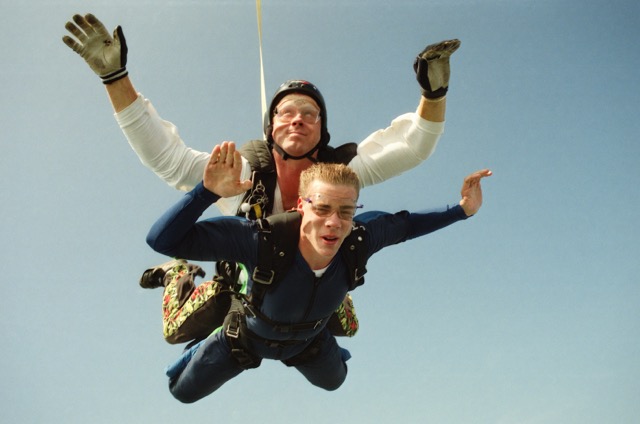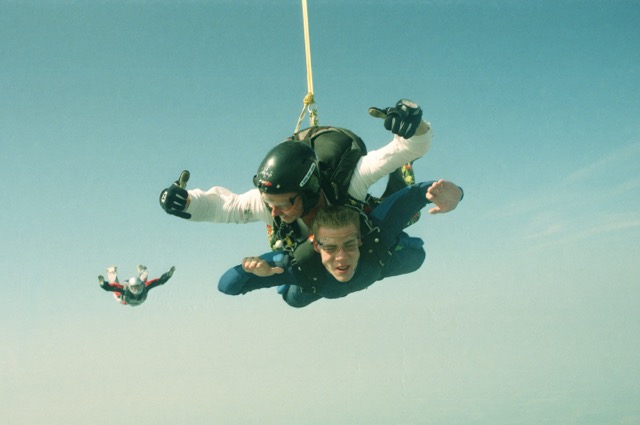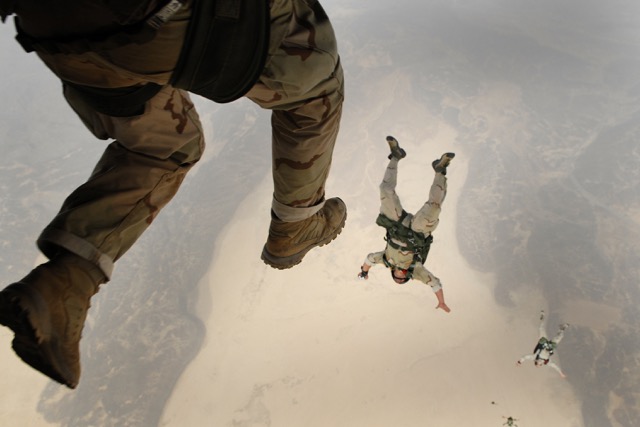Are you ready to take your adventure to new heights? Skydiving is an exhilarating and adrenaline-pumping activity that allows you to experience the thrill of freefalling through the sky. However, before you take the leap, it is essential to prioritize safety. We will guide you through the key aspects of skydiving, including choosing a reputable skydiving center, understanding safety equipment and gear, learning proper body positioning techniques, and following emergency procedures in case of a malfunction. Prepare yourself for an unforgettable experience while ensuring your utmost safety.
Choosing A Reputable Skydiving Center
Skydiving is an exhilarating and adrenaline-pumping activity that is not for the faint of heart. It’s an experience that can provide you with a rush like no other as you freefall through the sky, feeling the wind against your face and the thrill of being truly alive. But before you take the leap, it’s important to ensure that you’re choosing a reputable skydiving center. After all, safety should always be the top priority when it comes to extreme sports like skydiving.
When it comes to choosing a reputable skydiving center, there are several factors that you should consider. First and foremost, you’ll want to do your research. Look up reviews and testimonials from past customers to get an idea of their experiences. Additionally, check if the skydiving center is certified by the appropriate governing bodies and if their instructors are licensed and experienced. You want to make sure that you’re jumping with professionals who know what they’re doing and follow strict safety protocols.
Another important aspect to consider is the equipment and gear used by the skydiving center. Safety should always come first, so make sure that they provide top-quality gear that is regularly inspected and maintained. This includes items such as helmets, jumpsuits, harnesses, and parachutes. You don’t want to take any chances when it comes to your safety, so ensure that everything is in proper working order.
Aside from safety measures, it’s also worth looking into the overall experience provided by the skydiving center. Do they offer different types of jumps and packages to suit your preferences? Are the instructors friendly and knowledgeable, making you feel comfortable and confident? These are all important factors to consider when choosing a reputable skydiving center, as they can greatly enhance your overall skydiving experience.
| Benefits of Choosing a Reputable Skydiving Center |
|---|
| 1. Peace of mind knowing that safety is a top priority |
| 2. Access to well-maintained and inspected equipment and gear |
| 3. Professional and knowledgeable instructors to guide you through the experience |
| 4. A wide range of jump options and packages to suit your preferences |
| 5. An overall enhanced skydiving experience |
Understanding Safety Equipment And Gear
Skydiving is an exhilarating and adrenaline-pumping adventure that many people aspire to try at least once in their lives. But before taking the plunge, it is important to understand the crucial role that safety equipment and gear play in ensuring a safe and enjoyable skydiving experience. From helmets to altimeters, let’s dive into the world of skydiving equipment and gear, and how they contribute to your safety.
First and foremost, let’s talk about the most essential piece of skydiving gear – the parachute. This large piece of fabric, often made of nylon, is responsible for slowing down your descent after you jump from the airplane. Parachutes come in various sizes and designs, depending on factors such as the jumper’s weight and experience level. It’s crucial to ensure that your parachute is properly packed and maintained by a certified parachute rigger to ensure its optimal functionality.
In addition to the parachute, skydivers also rely on a harness system, which is essentially a set of straps that secure the jumper to the parachute. The harness is designed to distribute the forces exerted during opening shock and landing evenly across the body, thus minimizing the risk of injuries. It is important to have a harness that fits properly and is adjusted according to your body size and shape to ensure maximum comfort and safety during your skydiving adventure.
- One of the most important aspects of skydiving safety is the use of the Automatic Activation Device (AAD). This small, electronic device is a lifesaver, quite literally. It is designed to automatically deploy the reserve parachute if the main parachute fails to open or if the skydiver is still in freefall at a dangerously low altitude. The AAD provides an extra layer of safety and peace of mind, ensuring that even if something goes wrong, you have a backup parachute to rely on.
- Another crucial piece of safety equipment is the altimeter. This small instrument measures the altitude above sea level and helps skydivers determine when to deploy their parachutes. It is essential to have an accurate and properly calibrated altimeter to ensure the timely deployment of the parachute at the desired altitude, thus avoiding potential risks or dangers.
| Key Equipment | Importance |
|---|---|
| Parachute | Slows down descent |
| Harness System | Distributes forces and prevents injuries |
| AAD (Automatic Activation Device) | Deploys reserve parachute in emergency |
| Altimeter | Measures altitude for timely parachute deployment |
Learning Proper Body Positioning Techniques
When it comes to skydiving, safety is of utmost importance. One of the key elements in ensuring a safe and enjoyable skydiving experience is learning proper body positioning techniques. These techniques not only help you maintain control and stability during freefall, but they also aid in preventing accidents and injuries. So, let’s dive into the details of mastering body positions while soaring through the sky!
First and foremost, let’s start with the basics. One of the most fundamental body positions in skydiving is the neutral body position, also known as the belly position. In this position, you lie on your belly with your arms and legs spread slightly. Your head is lifted to maintain a forward gaze, and your back is slightly arched. This position allows for maximum stability and control, especially for beginners.
As you progress in your skydiving journey, you’ll have the opportunity to explore more advanced body positions. One such position is the arched or swimming position. In this stance, you arch your entire body, resembling a banana shape. The arched position is primarily used for gaining forward movement during freefall. It’s important to remember to keep your head up and your legs and arms slightly bent to maintain stability in this position.
- Another body position that skydivers often practice is the backfly position. As the name suggests, in this position, you’re lying on your back, facing towards the sky. Your body should be positioned in a slight arch to maintain stability and control. This position is often used for backtracking during group formations.
- On the other hand, the sitfly position allows you to sit up vertically in the air. While it may sound relatively straightforward, maintaining balance in this position can be a bit challenging. Your legs should be bent at the knees and slightly apart, while your arms are extended out to the sides for better stability.
- Lastly, let’s not forget about the head-down position, which is often a favorite among experienced skydivers seeking an exhilarating freefall experience. In this position, you’ll be flying headfirst, facing towards the ground. Your arms and legs should be positioned in a controlled manner to maintain stability and control while enjoying the rush of adrenaline!
It’s important to note that mastering these body positions takes time and practice. It’s highly recommended to learn from experienced instructors and undergo thorough training before attempting advanced body positions. Safety should always be your top priority while skydiving, and proper body positioning techniques play a vital role in ensuring a safe and enjoyable adventure in the sky.
| Position | Description |
|---|---|
| Neutral/Belly Position | Basic body position for stability. |
| Arched/Swimming Position | Used for gaining forward movement. |
| Backfly Position | Lying on the back, facing the sky. |
| Sitfly Position | Sitting up vertically in the air. |
| Head-Down Position | Flying headfirst, facing the ground. |
Following Emergency Procedures In Case Of Malfunction
Imagine you’re at the top of a tall building, about to jump out of a perfectly good airplane. You’ve done your research and chosen a reputable skydiving center, you’ve learned about the safety equipment and gear, and you’ve mastered the proper body positioning techniques. Everything seems perfect as you take that leap of faith into the open sky. But what happens if something goes wrong? What if there’s a malfunction with your gear? We’ll be discussing the importance of following emergency procedures in case of a malfunction during a skydive.
| Skydiving can be an exhilarating and thrilling experience, but like any extreme sport, there are risks involved. One of the most critical aspects of skydiving is knowing how to react in emergency situations, especially when your safety is at stake. Whether it’s a tangled parachute, a broken strap, or any other malfunction, having a clear understanding of the emergency procedures can mean the difference between life and death. |
- First and foremost, it’s essential to stay calm and composed in the face of a malfunction. Panicking will only hinder your ability to think clearly and take the necessary steps to ensure your safety. Take a deep breath, focus, and trust in your training and equipment.
Next, assess the situation. Is the problem fixable, or do you need to initiate your emergency plan? If the issue can be resolved with the available resources, follow the appropriate steps to address it. However, if the problem persists or if it’s a severe malfunction, it’s time to initiate your emergency procedures.
In the event of a malfunction, one of the first steps is to cut away your main parachute and deploy your reserve chute. This action should be taken after making sure you have a stable body position and enough altitude. Remember, your reserve parachute is your backup, so it’s important to know how to deploy it properly and safely. Training and practice are crucial to ensure you can perform these actions swiftly and effectively in the heat of the moment.








